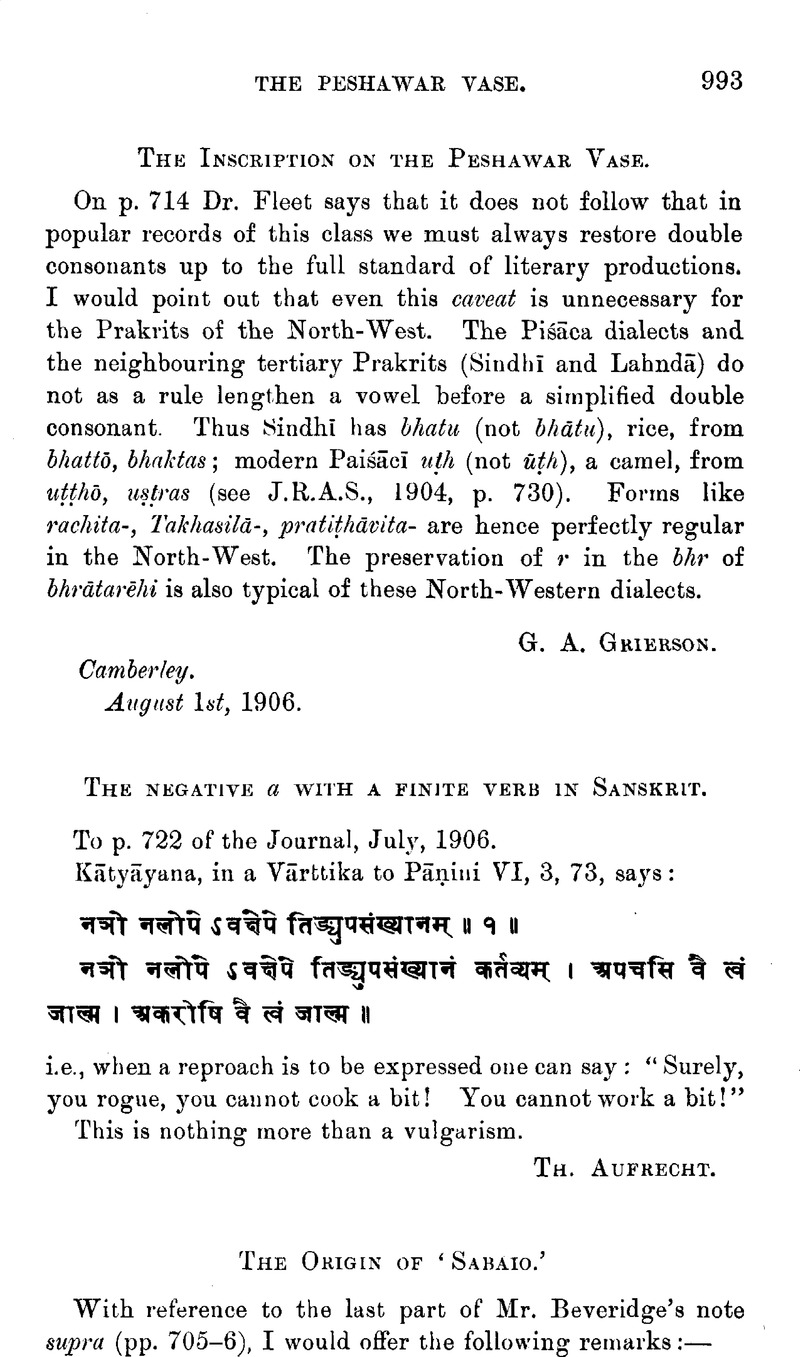No CrossRef data available.
Article contents
The Origin of ‘ Sabaio’
Published online by Cambridge University Press: 15 March 2011
Abstract

- Type
- Miscellaneous Communications
- Information
- Copyright
- Copyright © The Royal Asiatic Society 1906
References
page 994 note 1 Mr. Whiteway, in his Rise of Portuguese Power in India, p. 133, says that in the early part of 1510 Yūsuf was “ just dead ”; but he gives no authority for the assertion.
page 994 note 2 D. Lopes's Historia dos Portugueses no Malabar por Zinadím, p. 43. The words I have italicized are wanting in Rowlandson's faulty translation of the Tuḫ fat al-mujāhidin.
page 994 note 3 Commentaries of the Great Afonso Dalboquerque (Hakluyt Soc.), ii, pp. 82, 85, 87. In the first two cases Timoja is named as the authority, and in the third case a yogi.
page 994 note 4 Printed in Cartas de Affonso de Albuquerque, ii, pp. 3–5.
page 994 note 5 Compare what follows with Timoja's report to Albuquerque on p. 82 of vol. ii of the Com. of Af. Dalb.
page 994 note 6 See Com. of Af. Dalb., ii, 59.
page 995 note 1 Cartas de Aff. de Alb., i, p. 22 (misprinted 24 in the reference on p. 778 of the second ed. of Hobson-Jobson).
page 995 note 2 Cartas de Aff. de Alb., i, p. 420.
page 995 note 3 Cf. Sewell's A Forgotten Empire, p. 124.
page 995 note 4 Given in Com. of Af. Dalb., iii, 20–1. Unfortunately, like most of the letters printed in this work, there is no date. The version given in the edition of 1774 varies from that printed in the first edition of 1557.
page 995 note 5 This may represent ‘ Malū Khān’ (the son of Ismāīl), or possibly the person intended may be the ‘ Mealecan’ referred to below.
page 996 note 1 Mr. Beveridge has fallen into an error in saying that “ Mr. Whiteway refers to Briggs' translation of Ferishta ”: the reference to Ferishta is Yule's.
page 996 note 2 Mr. David Lopes, on p. lvii of the introduction to his Chronica dos Reis de Bisnaya, supports Barros in this matter against Couto.
page 996 note 3 See also Rise of Port. Power in India, pp. 133–4, note, where Mr. Whiteway states that Couto “says that the Sabaio was a Hindu chief in Kanara, whose sons he knew personally. These sons laughed heartily when Couto read them Barros's derivation of the word Sabaio; their father, they said, was neither a Turk nor a Yusaf.”


